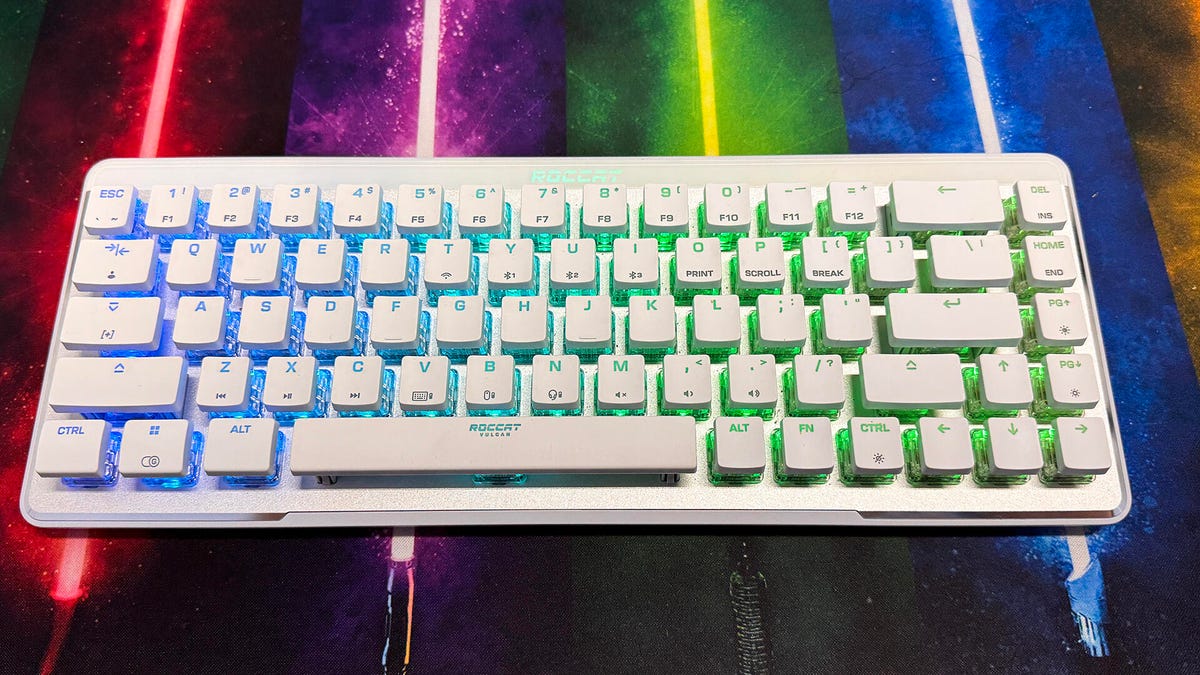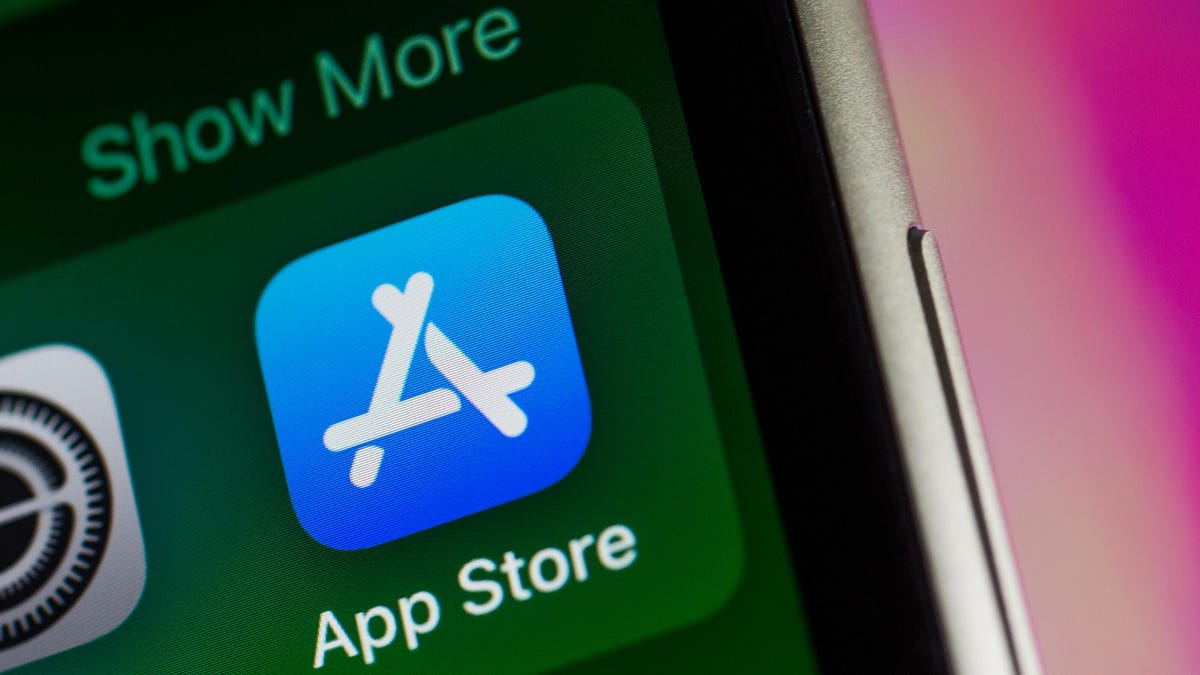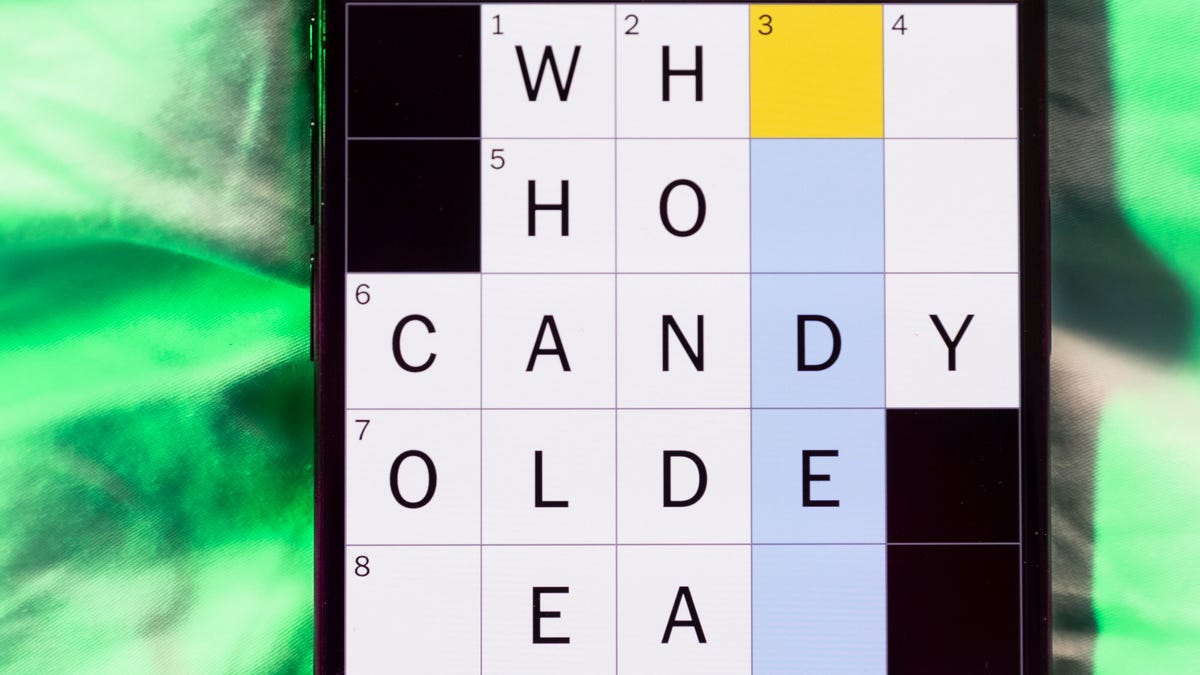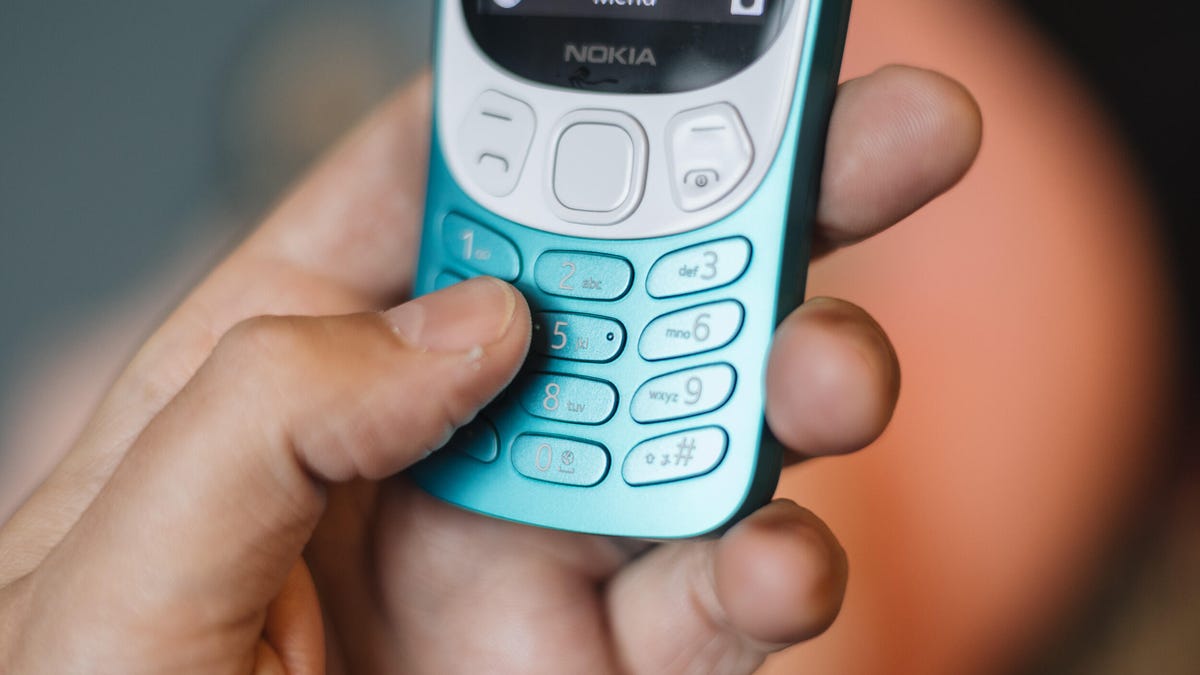Technologies
I Loved Using This Keyboard, but There Was One Thing I Just Couldn’t Get Used To
The Turtle Beach Vulcan II Mini Air is a great gaming keyboard, but it won’t replace my current one.

Gaming keyboards are everywhere these days, and with a plethora of options available it’s not hard to find a good one. They can also be expensive, so it can be difficult to know if the investment is worth the money. It’s with that in mind I got in the new the new Vulcan II Mini Air from Turtle Beach. I have some thoughts.
Turtle Beach bought the company behind these keyboards, Roccat, several years ago, but it only started phasing out that branding in May of 2024. So you might still find the Roccat branding on Vulcan II Mini Air (you can see it on my review sample here) if you buy one in the near future.
What I like about the Turtle Beach Vulcan II Mini Air
First things first, the size. The 65%-sized layout is my perfect setup because it still includes the arrow keys. True FPS gamers may prefer a 60% design, but I tend to mix my genres, and I’m also a writer in my work life, so I prefer having arrow keys (and Home/End keys — don’t you dare take those away from me). I don’t miss the dedicated media keys or functions keys too much, but this is certainly subjective.
The Vulcan II Mini opts for optical switches over the more traditional mechanical switches. At the risk of generalizing, optical and mechanical switches primarily differ in how they register the actuation of each key. Mechanical switches use physical contact between two metal plates while optical switches use beams of light to detect the actuation.
I hadn’t used optical switches much before testing the Vulcan II Mini but I can see their appeal for hardcore gamers. The idea is that the light-activated sensors allow for a much shorter actuation point for key presses, meaning there’s less time between when your finger moves to press the key and that key press being registered by your computer.
Turtle Beach says the actuation point of their Red Linear switches is 1.4mm, a decent improvement over the 2mm of most mechanical switches. That said, you’ll likely only notice the shorter actuation point if you’re a hardcore gamer who needs to prioritize every millisecond. Personally, I couldn’t tell a difference compared to my main keyboard with Cherry mechanical switches.
Another big advantage of optical is similar to the advantage Hall Effect switches have in keyboards like the Vulcan II TKL Pro. Since the sensors are activated by light and not physical contact between two plates, there’s less friction with each keypress. So the switches should last quite a bit longer. Most traditional mechanical switches are rated for about 100 million presses. These are rated for 200 million. That’s a pretty significant advantage if you don’t tend to upgrade your keyboard very often.
To be honest, it took me a little time to get used to the feel of the optical switches. They’re aren’t mushy by any means, but they are noticeably softer than the traditional switches I’m used to. Thankfully, they’re more tactile than Hall Effect switches. After a few hours, though, I couldn’t notice much of a difference anymore between the feel of the Vulcan II Mini and my regular keyboard.
The Vulcan II Mini’s build quality is top notch. The aluminum top plate gives it a nice solid feel with no creakiness or give that I could detect anywhere. At 578 grams, it’s also not very heavy either. The included braided cable also feels well-designed. It’s nice that it’s available in white, although I do wonder how clean it will stay long-term. The two-position kickstands allow for some nice ergonomic options.
Customization is one area where Turtle Beach levels things up a bit. Via the Swarm app, you have access to many of the typical customizations for gaming keyboards. But Turtle Beach also adds a secondary function to 29 keys, so you can quickly trigger another action. These Smart Keys are also equipped with dual LEDs that will indicate when the secondary function is active. On top of that, you can store up to five different profiles, so you can set up the perfect configuration for your favorite games.
No self-respecting gaming keyboard would stop you from customizing the RGB lighting to your heart’s content. So of course you can choose from a variety of lighting effects. That includes the AIMO effect, which synchronizes all your Turtle Beach accessories together so the lighting effects are coordinated.
Battery life
Being a wireless keyboard, battery life is important. Turtle Beach says the Vulcan II Mini can clock 240 hours of continuous use without the RBG lighting active, which is a bold claim. I haven’t used the keyboard exclusively for the approximately four weeks I’ve had it, but even with heavy usage, I still haven’t managed to kill it, and that’s with the RGB lights still on. Suffice to say, battery life has been awesome for me.
One trick Turtle Beach uses to accomplish this is a proximity sensor in the keyboard that automatically detects your presence to turn the lights on and off. Logitech does something similar in some of its keyboards, so it’s not revolutionary, but Turtle Beach lets you adjust the effect somewhat by changing the sensitivity of the sensor. At least, that’s the theory. I couldn’t get the Swarm app to save the settings for this when I changed it, so I can’t speak to how effective it is.
As the «Air» name might suggest, this version of the Vulcan II Mini is wireless (there’s a wired option for $119). It can connect to four devices: Three via Bluetooth plus one via an included 2.4Ghz wireless dongle. The only downside I found when connected via Bluetooth was that I could never get it to show up in Turtle Beach’s Swarm app. It showed up fine when using the dongle, but not on Bluetooth.
What I didn’t like about the Turtle Beach Vulcan II Mini Air
As cool as the optical switches are, the typing experience wasn’t great. I’m a writer by day, so I always prioritize a great typing experience first and a good gaming experience second. Even after using the Mini exclusively for more than three weeks, I just couldn’t the same level of comfort typing on it as with my Keychron Q81 Pro. I’m willing to acknowledge that much of that could be attributed to the II Mini’s low profile design, which I’ve never found to be as comfortable as a full-size profile.
The wake time for the Vulcan II Mini Air is also significantly slower than many other keyboards I’ve used. I’m not sure if this is because of the proximity sensor or something else, but it sometimes takes up to 10 seconds for my computer to begin registering key presses.
Should you buy the Turtle Beach Vulcan II Mini Air?
Overall, it’s a nice keyboard with plenty of excellent features for someone looking for a serious gaming keyboard. The small size means it doesn’t take up much space on the desk, the optical switches provide fast response times and greater durability, and the customization options are nearly endless. For me, though, I struggled to use it as a daily keyboard as it just didn’t offer me the tactility and feel that I prefer, but if you’re looking to upgrade your gaming keyboard, or just dive into the world of gaming keyboards for the first time, the Vulcan II Mini Air is a great choice.
Technologies
Judge Blocks Texas App Store Age-Check Law
A preliminary injunction found the Texas law, set to begin Jan. 1, is «more likely than not unconstitutional.»

A new Texas state law set to take effect on Jan. 1 would have required app stores to implement age verification processes. But the law has been put on hold, at least temporarily, by a federal court judge.
As reported by the Texas Tribune, Senate Bill 2420, also known as the Texas App Store Accountability Act, is the subject of a temporary injunction issued by US District Judge Robert Pitman.
Pitman said in his decision that the law as written is broad, vague and «more likely than not unconstitutional.» However, he also wrote the court «recognizes the importance of ongoing efforts to better safeguard children when they are on their devices.»
Don’t miss any of our unbiased tech content and lab-based reviews. Add CNET as a preferred Google source.
The Texas law, signed into law by Governor Greg Abbott in May, requires app store operators — including Apple, Google, Nintendo, Steam and more — to build age verification processes for the storefronts and to only allow downloads to minors who obtain parental consent. The injunction is a ruling in an October lawsuit filed by the Computer & Communication Industry Association.
CCIA senior vice president Stephanie Joyce said in a statement, «This Order stops the Texas App Store Accountability Act from taking effect in order to preserve the First Amendment rights of app stores, app developers, parents, and younger internet users. It also protects parents’ inviolate right to use their own judgment in safeguarding their children online using the myriad tools our members provide.»
Other individuals and the advocacy group Students Engaged in Advancing Texas also filed suits over the law, the Texas Tribune reported.
App Store Accountability Act
The bill author, State Senator Angela Paxton, said the bill was meant to give parents «common sense tools to protect their kids and to survive court challenges by those who may have lesser priorities.»
The language of Texas Senate Bill 2420 does not only include mobile app stores from Apple or Google, but any «website, software application, or other electronic service that distributes software applications from the owner or developer of a software application to the user of a mobile device.»
By that definition, websites with links to browser games or mobile game consoles with download options would fall under the Texas law as written. The law also defines mobile devices as including phones and tablets, as well as any other handheld device capable of transmitting or storing information wirelessly.
The parental consent aspect of the law requires those under 18 to have an app store account affiliated with a parent or guardian to purchase or download applications.
Age verification elsewhere
In an effort to keep adult materials out of reach of minors and to protect children from potentially harmful content and interactions, tech companies have been compelled by law or through legal action to verify the age of users.
Roblox, which has a huge audience of minors, began rolling out stricter age verification after investigations and lawsuits hurt its reputation as a safe gaming space. Australia is perhaps the most large-scale example of a government restricting access to online content. In December, Australia began restricting social media access to those 16 and older. Reddit recently challenged that law.
In the US, age verification laws have primarily targeted adult sites. Texas already has a law on the books that requires adult sites to age-block their content. The Supreme Court upheld that law in a June ruling. The UK has also enacted age restriction rules for adult sites as have other US states.
Technologies
Today’s NYT Mini Crossword Answers for Thursday, Dec. 25
Here are the answers for The New York Times Mini Crossword for Dec. 25.

Looking for the most recent Mini Crossword answer? Click here for today’s Mini Crossword hints, as well as our daily answers and hints for The New York Times Wordle, Strands, Connections and Connections: Sports Edition puzzles.
Need some help with today’s Mini Crossword? Of course, there’s a very Christmassy clue involved. And once you solve the entire puzzle, look at the letters used in all the answers and see what they have in common. (5-Across will tell you!) Read on for all the answers. And if you could use some hints and guidance for daily solving, check out our Mini Crossword tips.
If you’re looking for today’s Wordle, Connections, Connections: Sports Edition and Strands answers, you can visit CNET’s NYT puzzle hints page.
Read more: Tips and Tricks for Solving The New York Times Mini Crossword
Let’s get to those Mini Crossword clues and answers.
Mini across clues and answers
1A clue: ___ King Cole, singer with the album «The Magic of Christmas»
Answer: NAT
4A clue: Body drawings, informally
Answer: TATS
5A clue: Letters to ___ (what this Mini was made with)
Answer: SANTA
6A clue: Huge fan, in slang
Answer: STAN
7A clue: «Illmatic» rapper
Answer: NAS
Mini down clues and answers
1D clue: Grandmothers, by another name
Answer: NANAS
2D clue: Abbr. before a name on a memo
Answer: ATTN
3D clue: Org. with long lines around the holidays
Answer: TSA
4D clue: «See ya later!»
Answer: TATA
5D clue: Govt.-issued ID
Answer: SSN
Don’t miss any of our unbiased tech content and lab-based reviews. Add CNET as a preferred Google source.
Technologies
Don’t Let a Border Agent Ruin Your Holiday Trip. Travel With a Burner Phone
Yes, you should leave your main phone at home and take a cheap burner this winter.

Prepare for a whole new level of border-crossing anxiety this holiday season: the high-probability of a phone search. New figures from US Customs and Border Protection say agents aren’t just glancing at your lock screen anymore — they are aggressively ramping up device inspections, even for citizens coming home. We aren’t just talking about a quick scroll through your photos, either. Agents are increasingly using forensic tools to clone and analyze everything on your device.
The stats are genuinely alarming. In just a three-month window this year, nearly 15,000 devices were flagged for searches, with over a thousand subjected to deep-dive data copying. If you’re traveling with your primary phone, you are essentially carrying your entire digital existence into a legal gray zone where privacy is optional.
The smartest defensive play is remarkably low-tech: the burner phone. By traveling with a secondary, stripped-down device, you ensure your private data stays safe at home while you stay connected abroad. But privacy isn’t the only perk. Moving to a «dumb» phone is the ultimate digital detox, helping you escape the notification trap that usually ruins a vacation.
Even figures like Conan O’Brien have ditched the smartphone to cut through the noise. Whether you’re dodging invasive border searches or just trying to enjoy your trip without being glued to a screen, a burner might be the best travel investment you make this year.
Read more: Best Prepaid Phone of 2025
Although carriers have offered prepaid phones since the ’90s, «burner phones» or «burners» became popular in the 2000s following the celebrated HBO series The Wire, where they helped characters avoid getting caught by the police. Although often portrayed in that light, burners aren’t only used by criminals; they’re also used anyone concerned with surveillance or privacy infringement.
What is a burner phone, and how does it work? Here’s everything you need to know about burners and how to get one.
Don’t miss any of our unbiased tech content and lab-based reviews. Add CNET as a preferred Google source.
What is a burner phone?
A burner phone is a cheap prepaid phone with no commitments. It comes with a set number of prepaid call minutes, text messages or data, and it’s designed to be disposed of after use.
Burner phones are typically used when you need a phone quickly, without intentions of long-term use. They’re contract-free, and you can grab them off the counter. They’re called burner phones because you can «burn» them (trash them) after use, and the phone can’t be traced back to you, which makes them appealing to criminals. Of course, those committed to illicit activities often do more than just throw these phones in the trash, and often completely obliterate the SIM cards and other materials by smashing them with a hammer or melting them away.
Burners are different from getting a regular, contract-bound cellphone plan that requires your information to be on file.
Why should you use a burner phone?
Burner phones are an easy way to avoid cellphone contracts or spam that you get on your primary phone number. Burners aren’t linked to your identity, so you can avoid being tracked down or contacted.
You don’t have to dispose of a burner phone after use. You can add more minutes and continue using it. Burner phones can still function as regular phones, minus the hassle of a contract.
You can also get a burner phone as a secondary phone for a specific purpose, like having a spare phone number for two-factor authentication texts, for business or to avoid roaming charges while traveling. Burner phones are often used by anyone concerned with privacy.
Read more: The Data Privacy Tips Digital Security Experts Wish You Knew
Burner phones, prepaid phones, smartphones and burner SIMs: What’s the difference?
Burner phones are cheap phones with simple designs that lack the bells and whistles of a smartphone. Because they’re designed to be disposable, you only get the essentials, as seen by the most common version, the flip phone.
All burner phones are prepaid phones, but not all prepaid phones are burners. What sets a burner apart is that you won’t have to give away any personal information to get one, and it won’t be traceable back to you. Again, a burner phone is cheap enough to be destroyed after use.
Prepaid smartphones are generally low-end models. You can use any unlocked smartphone with prepaid SIM cards, essentially making it a prepaid phone.
If you want a burner, you don’t necessarily have to buy a new phone. You can get a burner SIM and use it with an existing phone. Burner SIMs are prepaid SIMs you can get without a contract or giving away personal information.
Where can you buy a burner phone?
Burner phones are available at all major retail outlets, including Best Buy, Target and Walmart. They’re also often available at convenience stores like 7-Eleven, local supermarkets, gas stations and retail phone outlets like Cricket and Metro.
You can get a burner phone with cash, and it should cost between $10 and $50, although it may cost more if you get more minutes and data. If you’re getting a burner phone specifically to avoid having the phone traced back to you, it makes sense to pay with cash instead of a credit card.
If you just want a prepaid secondary phone, you can use a credit card. Just keep in mind that credit cards leave a trail that leads back to you.
There are also many apps that let you get secondary phone numbers, including Google Fi and the Burner app. However, these aren’t burners necessarily because the providers typically have at least some of your personal information. Additionally, apps like Google Talk require a phone number that’s already in use for you to choose a number with the service.
If you’re just looking to get a solid prepaid phone without anonymity, check out our full guide for the best prepaid phone plans available. We also have a guide for the best cheap phone plans.
-

 Technologies3 года ago
Technologies3 года agoTech Companies Need to Be Held Accountable for Security, Experts Say
-

 Technologies3 года ago
Technologies3 года agoBest Handheld Game Console in 2023
-

 Technologies3 года ago
Technologies3 года agoTighten Up Your VR Game With the Best Head Straps for Quest 2
-

 Technologies4 года ago
Technologies4 года agoBlack Friday 2021: The best deals on TVs, headphones, kitchenware, and more
-

 Technologies4 года ago
Technologies4 года agoVerum, Wickr and Threema: next generation secured messengers
-

 Technologies4 года ago
Technologies4 года agoGoogle to require vaccinations as Silicon Valley rethinks return-to-office policies
-

 Technologies4 года ago
Technologies4 года agoOlivia Harlan Dekker for Verum Messenger
-

 Technologies4 года ago
Technologies4 года agoiPhone 13 event: How to watch Apple’s big announcement tomorrow
